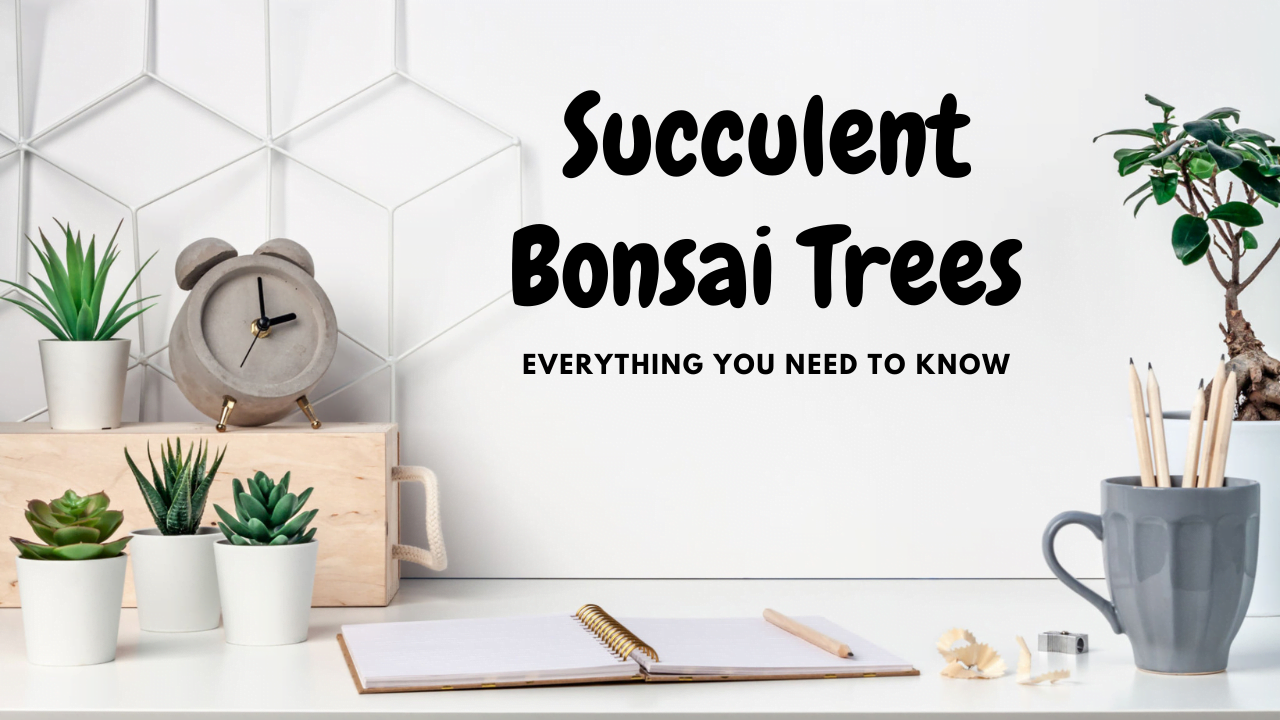No matter what level of gardening experience you have, most of us can identify a bonsai tree when we see one. Also, you can’t deny the appeal of those miniature trees, regardless of whether you like the miniature aesthetic or zen atmosphere.
So, how about applying some of that unique gardening style to succulents?
Moreover, if you’re looking for something new to do with your plants, give bonsai a try if you’re a succulent lover.
If you have a small space, bonsai is a great choice to keep your succulent tree small and more manageable. You can also get one for succulent lovers who wish they could spend more time with their plants. And bonsai-style gardening is an ideal way to get creative with your succulents and try out a new hobby.
Bonsai tools are essential for maintaining and shaping your bonsai trees. Whether you’re a beginner or an experienced bonsai enthusiast, having the right tools is important. You can buy bonsai tools online, which offer a wide range of options and prices to fit your needs and budget. Make sure to choose high-quality tools that will last for years and help you achieve the desired results for your bonsai trees.
Why Succulents Are Ideal for Bonsai
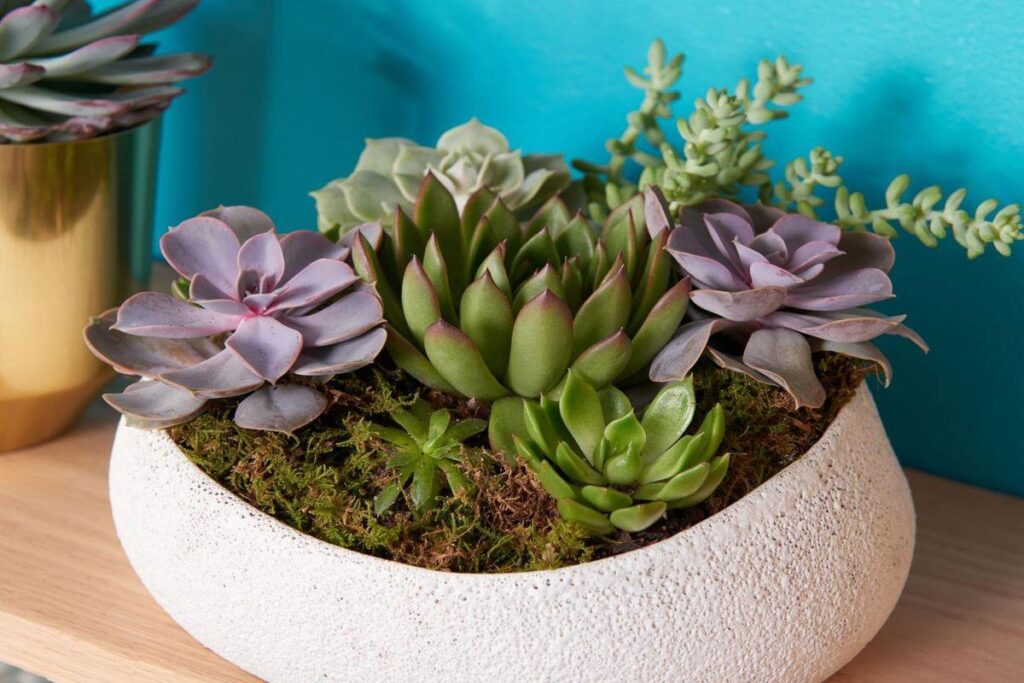
If you are a succulent lover and traditional bonsai plants do not appeal to you, no worries: succulents are perfect for bonsai. It is a hardy plant with a tendency to stay small if conditions do not allow them to grow to a significant size. Additionally, succulents are typically hardy plants with a small natural size.
If you grow succulents, you can mimic the conditions that limit their growth, allowing you to keep your succulents as small as possible.
Also, succulents are a great choice for bonsai because of their appearance. The thick stems and fleshy leaves look spectacular as bonsai. In addition, succulents come in many colours, sizes, and leaf shapes, giving you plenty of variety.
Moreover, most succulent plants respond well to pruning, so you can shape them without accidentally harming your plant. In addition to shaping your bonsai, pruning will also help you keep your succulent bonsai small, which will be easier to maintain in the long run. Also, you can use their cuttings to grow more succulents that you can bonsai if you wish.
Moreover, they are incredibly easy to care for, making them a great choice if you do not have much time to spend on your succulent bonsai. Also, they grow more slowly than other plants, giving you plenty of time to plan your bonsai and shape it accordingly.
Unlike traditional bonsai, succulent bonsai usually don’t need root pruning. Your succulent bonsai will probably do better if you leave its roots intact. Succulent plants usually grow well in shallow containers, so root pruning is rarely necessary.
Succulent Varieties that Make for Ideal Bonsai
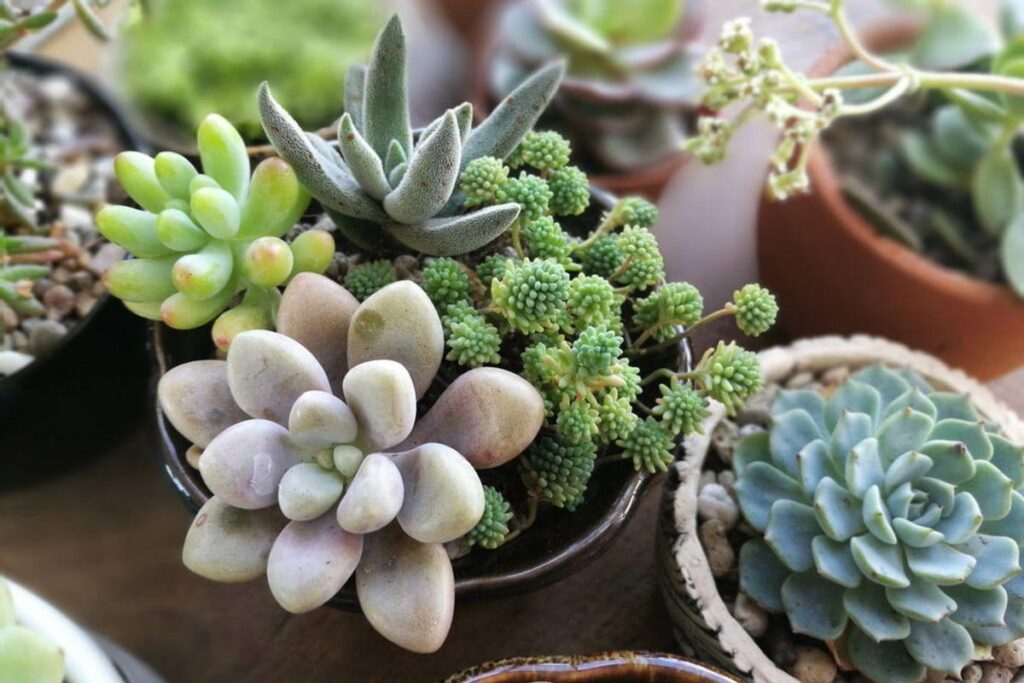
Sedum, Crassula Ovata, and Euphorbia Milii are the best variety for growing succulent bonsai. Still, many other species require expertise in bonsai handling.
But making succulent bonsai is a rewarding hobby, and this beauty can increase the aesthetic value of your garden.
So, make sure to refer to the care guidelines discussed in the later section of this article when making your succulent bonsai to avoid harming your succulent bonsai in the process.
To make your bonsai decision easy, I have listed succulent plants you can consider for growing bonsai. The list is divided into three levels of difficulty based on the requirements of the plants.
The plant species for beginners can adapt to a fairly wide range of growing conditions, whereas species listed as intermediate and advanced needs higher levels of control.
| Beginners | Intermediate | Advanced |
| Adenium obesum (Desert rose) Brachychiton species (Australian bottle tree) Bursera fagaroides (Elephant tree) Cereus peruvianus var. monstruosus Chorisia speciosa (Floss silk tree) Crassula ovata (Jade plant) Erythrina species (Coral tree) Euphorbia francoisii Euphorbia milii (Crown of thorns) Jacaratia corumbenis (Dwarf papaya)J atropha podagrica (Bottle plant) Mammillaria bocasana var. monstrosa (Snowball cactus) Moringa species Pachypodium saundersii (Madagascar palm tree) Plectranthus ernestii Portulacaria afra (Elephant Bush) | Alluaudia comosa Bursera species Commiphora species (Myrrh) Cyphostemma juttae Dorstenia species Euphorbia ambovombensis Fockea species Fouquieria diguetii Fouquieria fasciculata Jatropha species Pachypodium densiflorum Pachypodium windsorii Sedum frutescens Sedum oxypetalum Trichodiadema bulbosum Uncarina species | Adenia species Ceraria species Cyphostemma species Othonna species Pachycormus discolor (Elephant tree) Sarcocaulon species Tylecodon species |
How to Make Succulent Bonsai
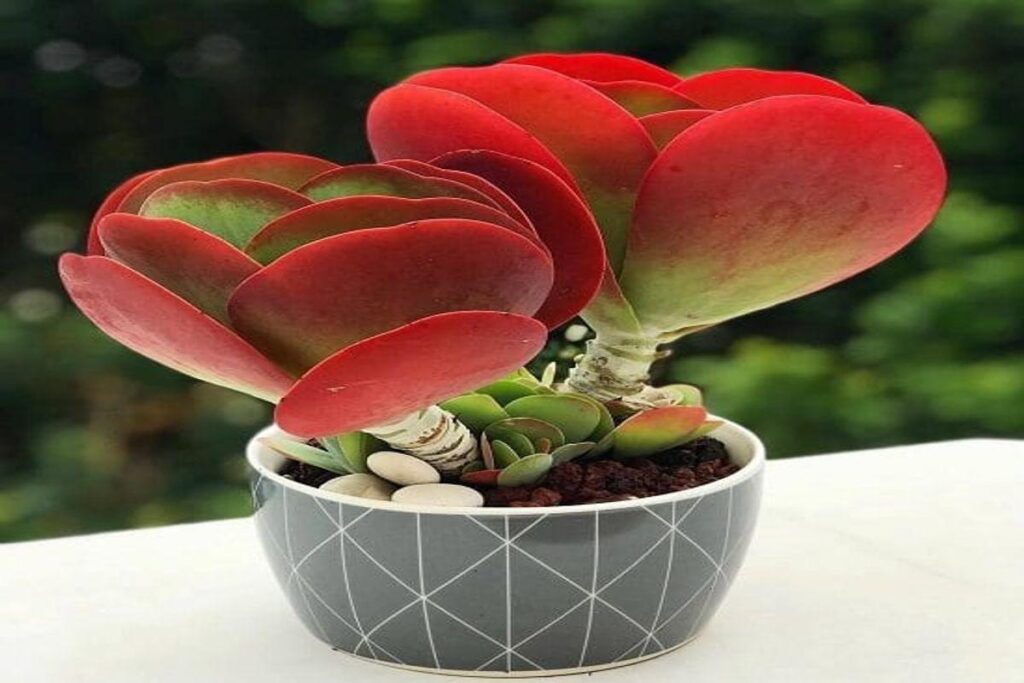
First thing first, choose the right plant. Ideally, select a healthy, well-established plant with smaller spaces between leaves and branches because thicker foliage will allow you to prune your succulent plant more easily without taking the risk that your bonsai plant will look thin and sparse when you are done.
If you have a certain colour or variety of succulent plants in mind, do not be afraid to give it a try. As interesting colours and leaf shapes will look great.
As mentioned, Crassula ovata, Sedum, and Euphorbia trigona are the best to make bonsai. Moreover, apart from this, you have enough succulent variety list mentioned earlier for your bonsai. Also, some gardeners have even found success with species of cacti, such as Cereus peruvianus monstrose and Opuntia imbricate. So do not be afraid to experiment and see if you can create art from other types of succulents.
If you want to grow petite succulent bonsai, then make sure to choose a species that won’t outgrow your bonsai pot. A major aspect of keeping the succulent trees small is choosing smaller species.
If you want to focus more on shape than size, you have many options, but you will need more room to accommodate your new hobby.
Any succulent bonsai tree needs a container and soil to allow adequate drainage. Technically, you can grow succulents in a pot with no drainage hole, but it is not recommended. Instead, use the same type of soil that you would use for any other type of succulent variety.
Usually, succulent bonsai are grown in a shallow pot to keep the succulents small. The less space you give the roots to spread and grow, the less the plant will grow. In addition, limiting the mature size of your plant can further control the shape of your succulent bonsai as it grows.
If the appearance of your succulent bonsai is a priority, consider covering your soil in decorative pebbles or crushed rock. The advantage of using small stones or gravel is that they come in various colours and textures and do not seal any moisture to the soil below. However, avoid material that may prevent water in the soil from naturally evaporating.
While pruning your succulent tree into its new bonsai shape, always picture what you want your finished product to look like. Because having an ideal image in mind will help you decide which stems or leaves needs to be pruned. If you want to propagate your cuttings, set them aside to plant after letting them dry out a bit.
Moreover, the best time to prune succulent trees is before their growing season. If you expect your plant to grow throughout the summer, start shaping your bonsai in the spring to continue to shape it later as it produces more leaves.
If you want to keep your succulents small, make sure you start pruning before the plant has a chance to produce a significant amount of new growth. If you wait until the end of the growing season, you may find it more challenging to maintain the size of your plant.
While shaping your succulent bonsai, you may notice that your plant struggles to stay upright once you’ve pruned some of the lower branches and leaves. You can help your bonsai by carefully supporting it with an aluminium wire. The aluminium wire is ideal because it’s strong enough to support most succulents but pliable enough that you can shape it however you need to.
Caring for Succulent Bonsai
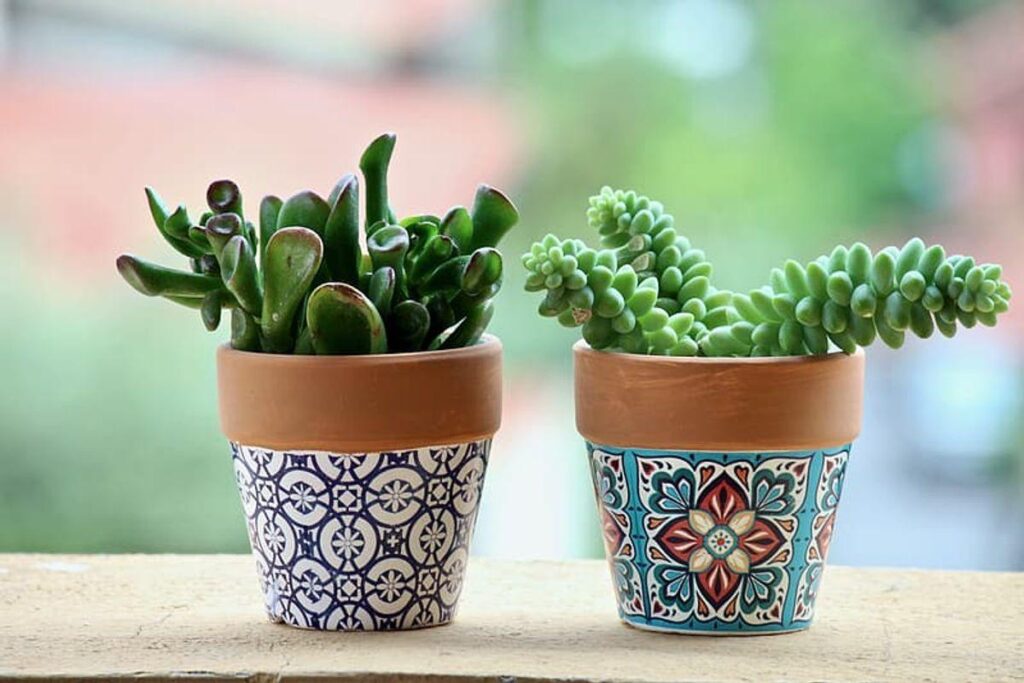
Placement
In most temperate zones, Succulents bonsai are considered indoor plants. If you want to grow them outdoors, ensure full sun and high temperatures for succulents’ bonsai. However, do not allow the temperature to drop below 40 degrees Fahrenheit. Also, ensure they get substantial light and full sun, especially when grown indoors.
Watering
Succulent bonsai can hold large amounts of water inside their leaves, so water is sparsely and allows the plant to dry out a little between watering. If you keep succulent bonsai relatively cold during winter, watering can be reduced to once every three weeks. Moreover, monitor your tree closely and water when the soil dries slightly. Jade Bonsais don’t mind being overwatered as much as most succulents do.
Fertilizing
During the growing season, from spring to autumn, fertilize your succulents once a month. Fertilize succulent bonsai with 5-5-5 for slower and 14-14-14 for faster growth.
However, when succulent plants are dormant, they do not fertilize.
Pruning and wiring
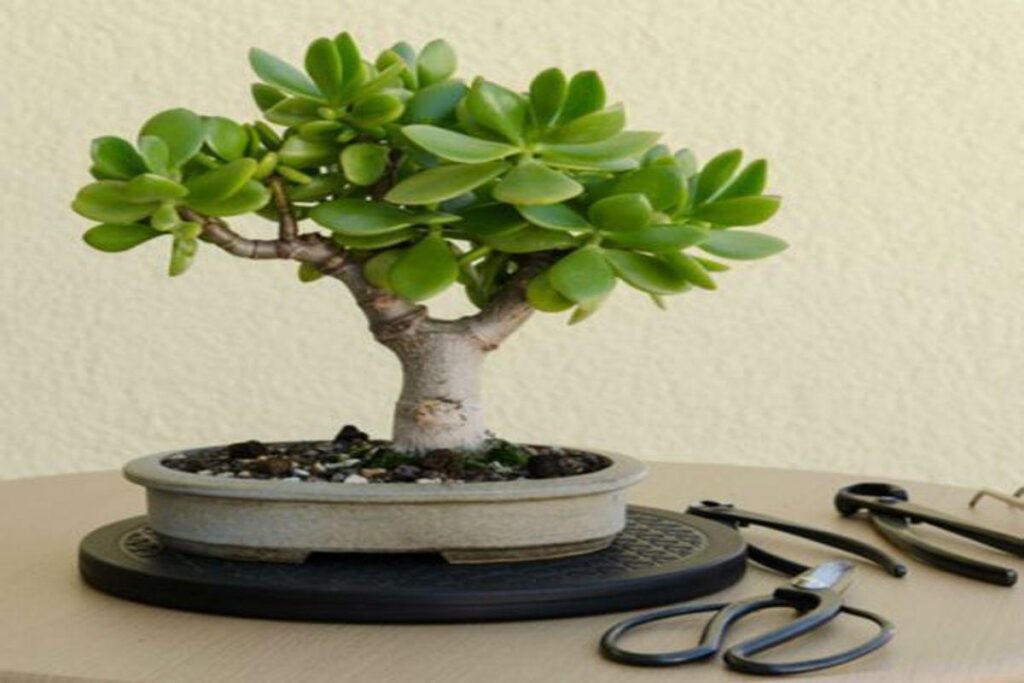
A succulent plant’s trunk and branches retain water. The water retention makes the succulent tree limbs heavy, which naturally bends the trunk and branches. Also, they respond very well to pruning, and you should prune them regularly to force them to grow branches, especially in the lower part of the trunk.
Make sure not to use cut-paste on Jade and most succulent Bonsai trees. The succulent bonsai trunk and branches make it very susceptible to rotting. Also, as they have a very soft bark, so be cautious while wiring. If you wire a succulent bonsai, monitor it closely, as the wire will cut into the bark quickly.
Repotting
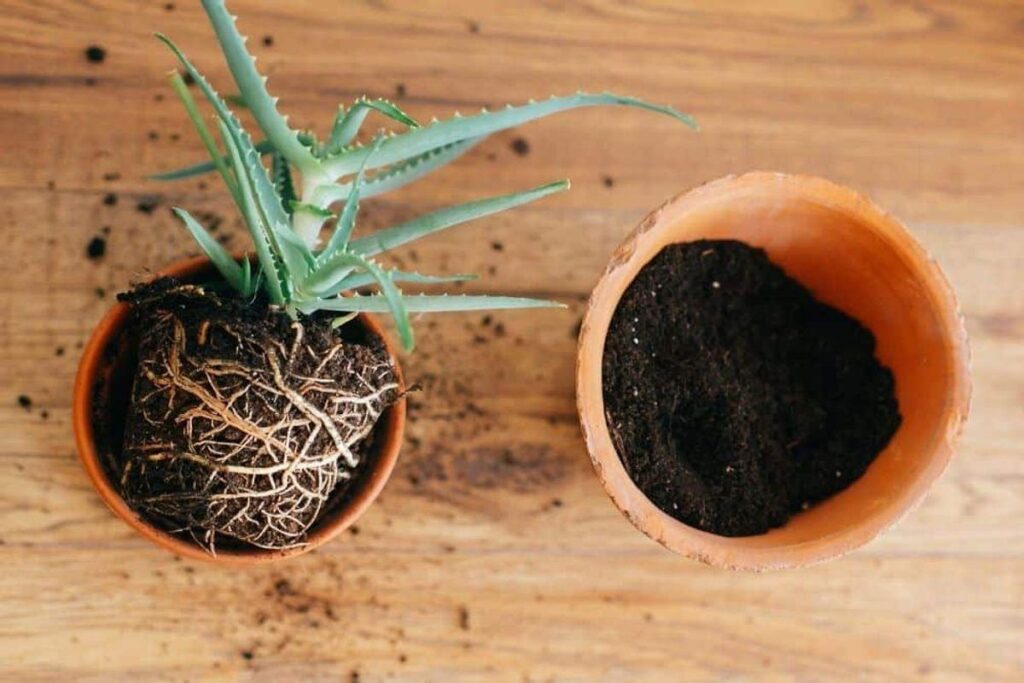
Repotting succulent bonsai plants should be done every other year in spring. Make sure to use a well-draining soil mixture, and don’t water the soil for about a week after repotting. This will allow the cut or damaged roots to dry and callous. In addition, watering after repotting leads to root rot, which may severely damage your succulent bonsai.
Propagation
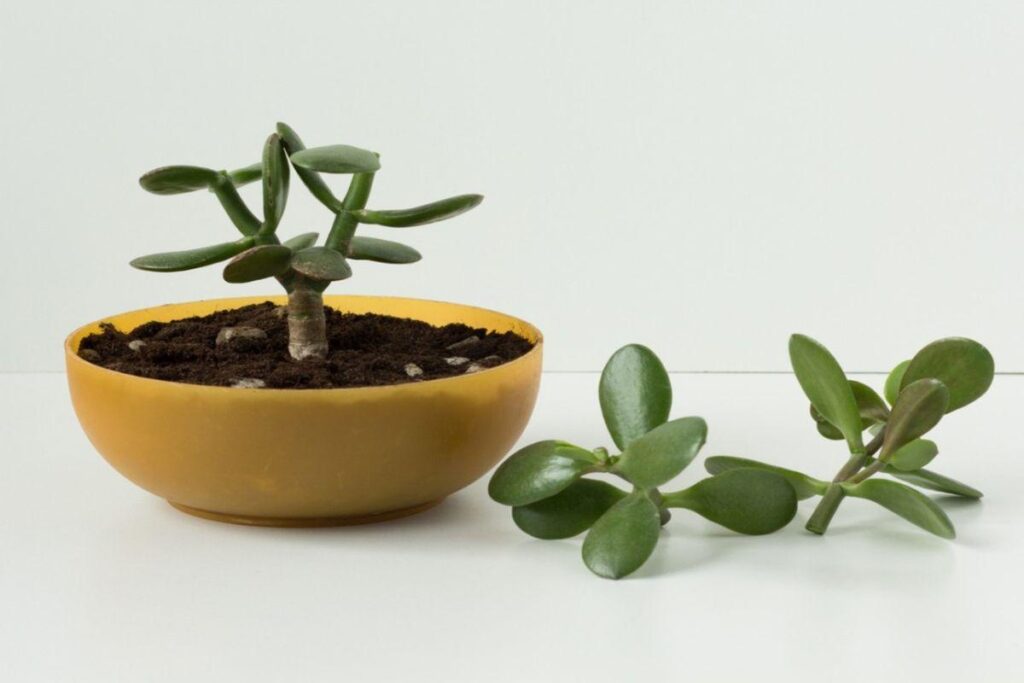
Most succulent trees are easy to propagate using cutting. And propagation should be done during the summer months.
But Some of the succulents must be propagated from seeds. Regardless of the type of plant, propagation methods differ from those of more conventional plants, so it is wise to look for information on propagation methods in general plant culture.
Pests and diseases
Succulent Bonsai trees grow strong when properly watered and exposed to sufficient sunlight. Therefore, you should not experience health problems with them as long as they are properly taken care of.
However, some Common pests are spider mites, mealybugs, and whiteflies. But good air circulation, quarantining new plants to collections, and periodic spraying of leaves and stems with water will prevent infestations to your bonsai tree.
FAQs
1. Can I bonsai cactus combo?
A cactus combo bonsai consists of one or more small cactus plants in a pot. Only specific varieties of cacti are selected to keep the collection from reaching a height greater than 10 inches. Compared to other houseplants, the cactus combo bonsai requires little maintenance.
2. Is succulent a bonsai tree?
Often smaller succulent plants take on the form of bonsai. However, you can promote their shape. In addition, there are many succulents for bonsai, but the Jade plant is frequently used as bonsai.
3. Why do succulents look like a tree?
Succulents stretch out when they aren’t getting proper sunlight. So first, you will notice the succulent start to turn and bend toward the light source. After it grows, it will become taller and have more space between its leaves.
Conclusion
Succulent bonsai are easy to care for, but they nearly have 10,000 succulent species available. Therefore, it would be hard for you to pick one suitable to grow them as a bonsai. For this, I recommend you to start with a Jade or Desert rose; these are easy to find and care for.
Undoubtedly, the art of bonsai is as fascinating as it is rewarding. So, combine your art with your love for succulents, and you might have the perfect new hobby.
Now you have enough knowledge to create a living work of art, choose your succulent, and start. Then, with creativity and patience, you can create the succulent bonsai of your dreams.
In the Bonsai Succulent process, if you need any help, feel free to contact us at Abana Homes. We are there to help you make your bonsai dream come true!
Related Articles
- Propagating Chinese Elm Bonsai Cuttings And From Seeds
- Best Chinese Elm Bonsai Soil and Fertilizer.
- Troubleshooting Common Problems With Chinese Elm Bonsai
- Buy Chinese Elm Bonsai: How Not to Get Scammed When Purchasing a Chinese Elm Bonsai Tree!
- Chinese Elm Bonsai Pruning And Styling.
- Creating a Chinese Elm Bonsai Forest- Step-By-Step Guide.

